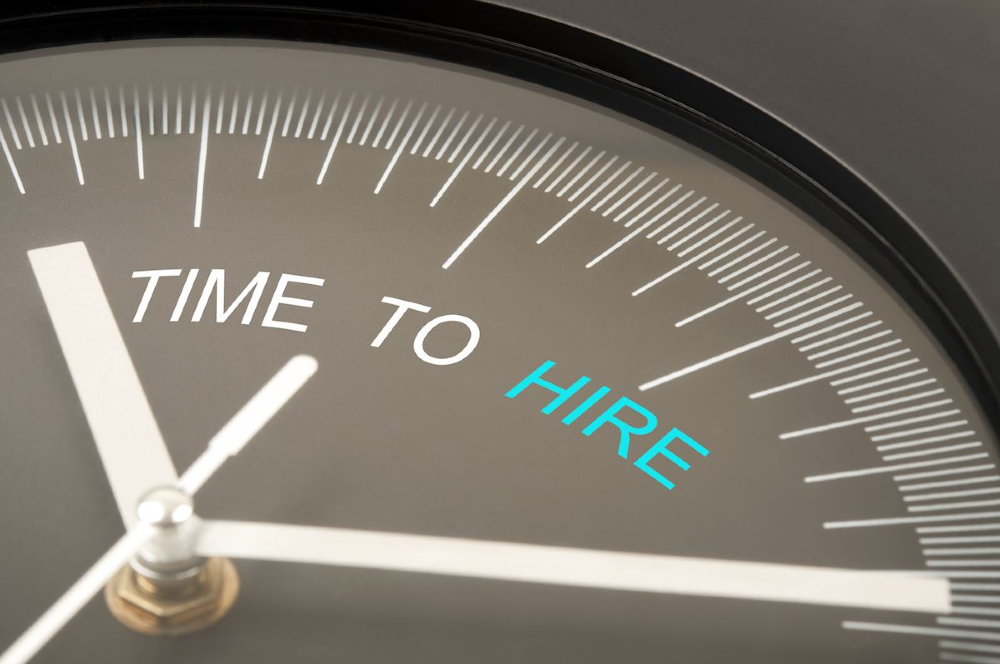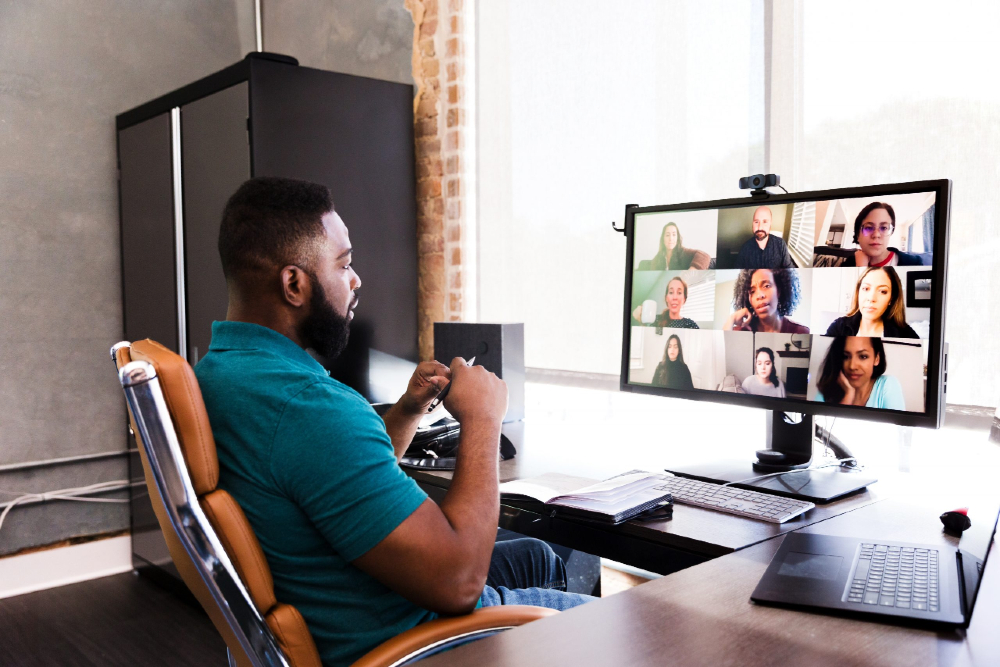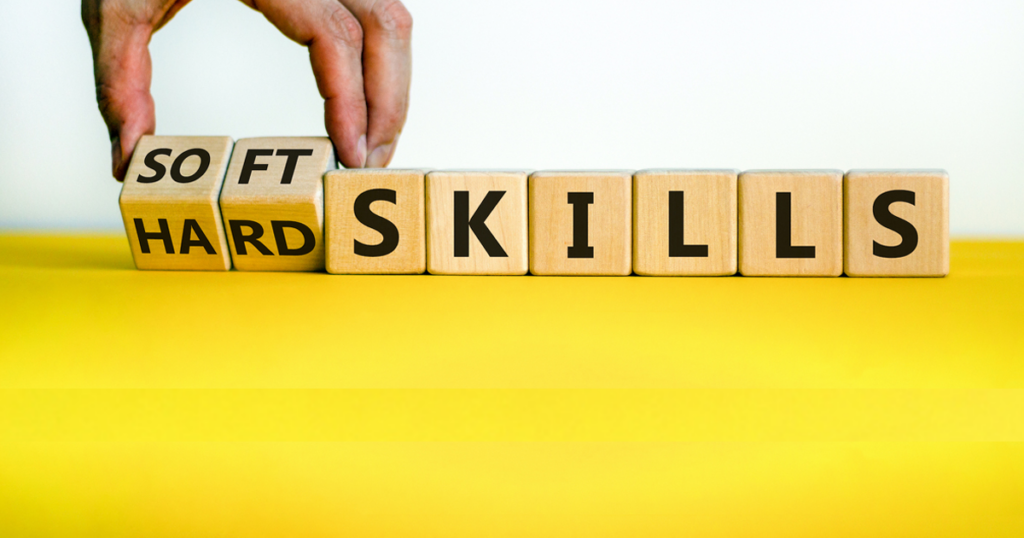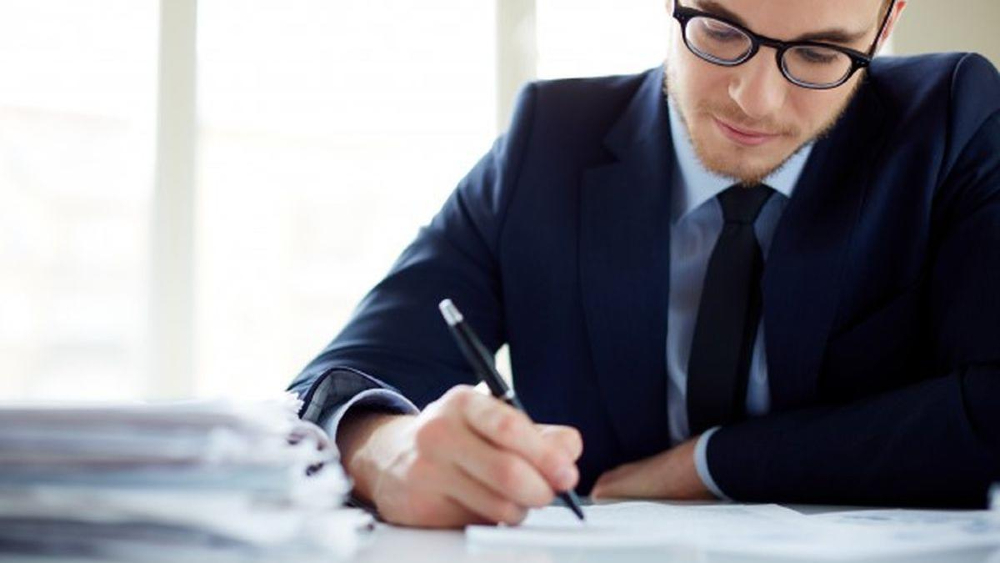
Hiring is a challenge for most businesses. It’s more than just finding new employees, or the onboarding and training process. Did you know that only a handful of companies take less than a month for their typical time-to-hire? The remainder will see the length of their own hiring process fall anywhere between one to four months!
The time it takes to hire just one person can have a significant impact on a company’s bottom line, especially if they’re competing with other companies for the top talent. For example, a study by HackerRank found that the time-to-hire rates can reach up to 45 days for tech and digital roles at large companies. Translation: That’s 45 days of lost productivity, wasted money on advertising/job boards, or both!
You see, recruiters and/or hiring managers spend a lot of time making sure that the candidates are suitably qualified for the position, there aren’t any red flags, and that he/she will be a good fit for the company culture, among other steps. This can be challenging when you have limited resources, and hundreds (or even thousands!) of applicants for each open role. Added to that is the great pressure to hire quickly, so that they can fill open roles faster than their competitors do. They also want to make sure they’re hiring only the best; if they don’t get it right, they’ll lose out on valuable talent (and money).
Here’s another thing to consider: Most hiring managers don’t have that much of a budget to work with (unless you’re working for a mega corporation). In fact, according to research carried out by HR software company Personio, 55% of HR managers have either had their budgets already slashed, or are expecting them to be slashed in the coming months, as businesses prune their budgets in preparation to face a potential global financial crash.
So how can hiring managers find great candidates for their open roles? And how can they speed up this process so they don’t lose out on valuable talent? In many cases, you can bring your time-to-hire down significantly if you follow some simple strategies. But first…
The term ‘time-to-hire’ (TTH) refers to the measure of how long it takes to close one position, which starts from posting the available job role, right up until the day you make an offer.
Hiring is a crucial performance pointer for HR teams. A short TTH shows that your team is well-organised and efficient in its process of recruiting, possesses good communication skills, plus having the ability to effectively handle both internal stakeholders and external candidates. In addition, it’s more likely that candidates will be satisfied with the level of treatment and candidate experience they receive during their applications.

Taking too long to fill the openings, or even making a bad hire, will be very costly in the long run. Research shows that even an average employee can cost a company around USD3,500, both direct and indirect. If you’re wondering why this is so, it’s important to note that there are various potentially high costs involved in the recruiting process, such as advertising the job role, the time cost of a recruiter (internal or external) in reviewing resumes and performing other relevant tasks, the time cost of the person conducting the interviews, background checks and screening, as well as various pre-employment assessment tests.
When you’re looking at the number above, think about how much money would be lost if you needed to hire for more than one role, more so if the new employee(s) chooses not to stay after their probationary period; that’s thousands of dollars and months of productivity lost!
There’s no “one-answer-fits-all” here, but it can be safely stated that the time taken by your company to hire one person is probably longer than you think!
According to one study, the average TTH in organisations around the world is 42 days – that’s just a little over two months! However, there are also many variables to be taken into consideration that can impact the TTH, such as location, industry, and qualification level of the candidate.
For example, some countries experience much longer times, like India with an average of 58 days. In comparison, the United States notes an average of 38 days, with Australia, Singapore, and Hong Kong looking at averages of 36 days, 30 days, and 29 days, respectively. The statistics also vary between industries: Software companies tend to have a quicker rate at about 36 days, whereas accounting and consulting firms take an average of 55 days.
The longest TTH occurs when businesses are not properly equipped to hire, or don’t have a proper process in place to determine which candidates should move forward. It also happens when they have a shortage of quality candidates available (i.e., too many unsuitable applications), or if they don’t know how long their decision making process will take, so they delay moving someone through until they’ve made up their mind. Other reasons include complexity around internal processes, or issues where there isn’t enough information available on why some candidates aren’t moving forward even though they’ve shown that they might be a good fit.

Uber, Airbnb, and Netflix are three companies that have a relatively short TTH. In fact, they’re some of the fastest to hire on average, because they don’t waste too much time on recruiting, interviewing, and processing candidates. Let’s have a look at each one:
They utilise a simple five-step hiring process which first involves submitting an application online. The applicant would then go through two rounds of interviews (online or in-person) with a possible assessment, complete an extensive background check; undergo drug testing, and then having a final onsite follow-up meeting with a HR representative.
Airbnb’s hiring process generally involves several stages which begins with filling out their online application form. If selected, you’ll get invited to an in-person or virtual interview, by one or more recruiters at different times. You’d then need to attend a further interview for cultural fit to assess whether you align with Airbnb’s core values; go through a technical assessment when invited back for another round of interviews; pass an extensive background check before being offered employment.
The hiring process at Netflix is simple yet effective – candidates must submit their online applications, then wait until they hear back regarding the next steps, which includes an initial screening and video interviewing, before getting invited for technical assessments. Candidates may also be interviewed by potential colleagues to evaluate their fit with the team and the company culture. The final step involves getting hired after passing the tests and an extensive background check successfully!
The faster you hire, the more time you have to focus on your company’s core business. A quick hiring process also means that hiring managers will be able to evaluate candidates more thoroughly before making a final decision about who gets hired – and if there’s anything about a candidate that isn’t quite right for the position, it’s easier to reject them without feeling too guilty or apologetic (which can leave both parties feeling awkward).
Who wouldn’t be happy when told: “You get to save money by cutting down on recruitment agency fees and other costs associated with hiring”? It’s estimated that companies lose USD1 billion annually due to bad hires; by cutting down on how long it takes to make those hires, they could save themselves tonnes of money in reduced costs associated with mistakes and employee turnover.
There will always be other companies who are able to hire quicker than yours. If it takes too long for you to close on a candidate, there may be some top talent who will be lured away from under your nose. There’s a term called ‘salary cost’ which you’d need to be aware of: If you wait too long, the candidate may receive a better counteroffer from your competition, resulting in a bidding war, thus increasing the salary cost.

A faster TTH will help you attract better candidates, because it means less wasted time in interviews, which will in turn show that people want to work at your company, and you’re able to respond efficiently. That translates into savings as well – you won’t need as many recruiters or advertising dollars because of how quickly jobs are filled up after being posted online. Ultimately, you’ll have a greater peace of mind in knowing that they’ll be more likely to say yes when you ask them if they want to come work for you.
A shorter hiring process can also improve your company’s culture. As mentioned above, it will show that people are eager to work at your company – and they’ll be even more excited once they’re hired! This means that you’ll be able to attract the top talent and get them on board faster.
Finally, a shorter TTH will help boost productivity by making sure there aren’t any gaps in the workforce when people leave for other jobs or retire. This means that you’ll be able to get more done in less time, which will help them achieve their targets faster, and aid in making your employer brand stronger by showing how quickly things get done at your company. Did you also know that lost productivity cost businesses a shocking USD1.8 trillion every year?
The bottom-line: A shorter time-to-hire can help companies find quality candidates faster and save money. The quicker you can bring someone on board, the sooner they can start contributing to your company’s bottom line.
This metric is also an effective way for management teams to measure how well their recruiting are performing. If a company consistently has longer than average time-to-hires for similar positions, this may indicate that there is a need for improvement in recruiting practices or onboarding processes. TTH can also be used as a proxy for quality of hiring process: If candidates tend to not accept offers quickly after being selected, or if they leave shortly after starting work, then this suggests that there may be issues with retention or performance expectations related back to recruitment efforts by managers who were involved in making those selections.
To sum up, your company’s TTH involves several stages. It takes a long time to hire one person, and even longer to find the right fit, because the recruiter/hiring manager has to go through multiple steps before making a decision to offer or not on an employment contract. Which is why it’s incredibly important to have the right people working together with you in order to help expedite everything, thus helping you save valuable resources. Enter GRIT Talent Platform, which not only cuts hiring time to 2-3 weeks on average and allows you to select from the active candidates database that’s growing 300% month-on-month, it also provides you with an automated interview scheduling and feedback feature to cut time spent on managing the recruiting process by 70% on average. The best part: It only costs USD999, which is a stark contrast from the four-figure amounts you would normally face in a typical cost per hire!
Join over 500 companies that are hiring (effectively and efficiently) with GRIT!

When it comes to hiring, you need to be thinking globally. Even more so in 2023, when the new norm is having colleagues from all over the world, and half of your company is probably working from home in their pyjamas! Now that it’s time to step up your recruiting efforts in doing your best to source and onboard new people, companies are still facing the same challenge – the struggle to find and retain top talent.
Which is why we’ll be talking about looking out for the four hiring trends in 2023 that may affect your business, and how to use them to get better results, with less time spent on hiring.
As the world continues to move away from traditional work schedules, remote work is becoming more popular. According to Gallup’s research, 56% of employees (that’s more than more than 70 million workers!) say that their job can be done working remotely from home. Remote workers are happier overall, more productive, and engage in better relationships with their co-workers (and even bosses!) than office-bound employees – simply because they can spend more time with friends and family.
This trend is only going to grow exponentially as millennials become the majority of the workforce; they’re already leading in this area, and they want it both ways – work remotely sometimes or even all the time, plus having flexible hours and schedules. Additionally, it’s important to note that millennials aren’t alone: The Gen Z (born between 1995-2014) also want flexible jobs so they can easily juggle personal commitments outside of work.
In fact, 65% of Gen Zers would consider leaving a job if they didn’t have access to flexible hours or remote working options. One example of how remote and/or hybrid work is playing such an important role in today’s way of work is Apple Inc.’s employees, who fought back and issued a petition shortly after its senior leaders told employees that they had to return to the office for at least three days a week, arguing that staffers can do “exceptional work” from home. Whereas many major companies including Atlassian, Coinbase, Citigroup, McKinsey & Company, and Gusto are offering permanent remote- or hybrid-work options. So, companies that offer this kind of flexibility get ahead in attracting top talent by providing what these generations want the most: Flexibility!

It’s important to invest in a digital interview guide, suitable tech assessment, and adequate trial period for each of your candidates. This will allow them to know in detail how the interview will be held, how they can prove themselves, and what to do when things go wrong.
“With all things being equal, hire for fit rather than skill, and run a hiring trial period,” said Mark Faggiano, CEO, TaxJar. He developed an interview process that contains specific steps to test for both skill and cultural fit – the ability to do great work in a 100% remote environment. “Though the process with the hiring manager is primarily skills testing, we’re looking as much for fit as dexterity, because we’ll take fit over skill all day long.”
After being selected, the candidate will have to go through a “Mutual Trial”, that lasts anywhere from 30 to 90 days. It allows both parties to figure out if they’re actually the right fit, or otherwise. Even though the candidate may have excelled in the interview, Faggiano understands that they need to prove they can excel in a 100% remote workplace.
“Can you walk the walk? Can you excel in the environment? How do you treat people? Are you someone that can deliver and work at the pace that we work at? Are you excited to get out of bed in the morning?” he quipped. You can also opt for remote teams that will work with you on a per-project basis, such as GRIT Squad, a distributed team of IT experts that supports growth initiatives and addresses the talent gap by providing remote IT services to digital native companies, tech startups, and SMEs. GRIT Squad offers bespoke solutions depending on each client’s needs, instead of a standard one-size-fits-all approach, thus allowing you to customise your very own team according to your budget. This personal touch is complemented by constant supervision, until each team or individual contributor is up and running.
Check out our ultimate guide to sourcing and onboarding the best remote talent
Ever heard the saying, “It takes 20 years to build a reputation and five minutes to ruin it”, by Warren Buffett?
You want candidates to be impressed by your company, because no matter how attractive or impressive the job posting is, it won’t do much good if there are other companies out there who enjoy a far superior reputation compared to yours. That’s where effective candidate experience comes into play: It’s a key factor in attracting and retaining the top talent, because it’s one of the first interactions candidates have with your brand.
Candidate experience encompasses a lot of things – it includes everything from filling out the application forms on your website or social media page, to interviewing with recruiters over video call at 6pm after getting off work at 5pm (yes, we’ve done this before), and finally having to complete skills assessment tests.
Furthermore, it’s been proven that a majority of job seekers (86%) do perform research on a company’s brand and reputation, before they’d even think of applying for a position there. Indeed, it wouldn’t even matter if they receive a high salary and various benefits, 75% of candidates say they wouldn’t want to work for a company with a bad reputation.

“Reputation is everything. If you want to stand out, you need to spend some time thinking about how to ensure your company looks different and get above the noise, especially if you’re in a crowded sector. I believe it’s your reputation that will set you apart,” said Simon Mass, founder and CEO, The Condo Store Group of Companies. Here are some ways to go about creating a strong brand that attracts the top talent:
Read more about the other excellent company cultures out there to inspire your own
Recruiting software helps you in sourcing and selecting the right people for the job role. Some of these include applicant tracking software (ATS), interviewing tools, and candidate relationship management. Research from Gartner found that 90% of companies chose to invest in HR technology to help solve people-driven challenges. In fact, HR tech spending grew by 57%, which focused heavily on recruiting and retention.
The ATS allows you to manage each stage of your hiring process, as well as keep track of candidates throughout their journey. In addition, you can sort through resumes based on certain criteria that you specify in advance (like location, education level, or skill set), making it easier for recruiters or HR managers to quickly find candidates who match your needs. The ATS also helps ensure that everyone involved in the recruiting process stays up-to-date with relevant information about new applicants at all times, so there aren’t any surprises later down the road when making decisions about who should get an interview request next!
By implementing skills tests which are useful for ruling out under-qualified individuals, employers can thus screen candidates more effectively, and shorten the hiring process. A fast streamlining is crucial, as companies race to offer employment opportunities to quality candidates before they find a position elsewhere. In addition to skills tests, some companies implement behavioural assessments as part of their screening process, which provide an insight into an applicant’s core attributes, such as having a strong work ethic and motivation.

”I’m frequently asked for the best practices that will supercharge applicant flow. I always say to remember that while software can transform recruiting, people set the parameters used to screen and sort candidates. Recruiting technology can transform the way you hire, but it needs a solid foundation. It’s moot to invest in recruiting software without reevaluating your hiring strategy. By questioning how you’ve done things and rethinking how you’ll do things going forward, savvy organisations can work with recruiting technology to evolve how they find talent and increase their applicant flow,” explained Joshua Siler, CEO, HiringThing.
However, if you’re looking to do away with the hassle of selecting the right recruiting software as well as implementing proper hiring strategies, GRIT Talent Platform is what you need. With our comprehensive talent ecosystem, extensive partnership networks, and exclusive referral schemes, you can access the largest and most diverse talent pool in the region. Our highly trained team of consultants, researchers, and more specialise in acquiring the region’s best tech and digital talent, working alongside you to streamline the entire hiring process so that your resources can be used for other purposes.
You might find this next piece of data hard to believe, but about 20% to 40% of companies hire new people based on referrals, and looks set to increase as more global borders are broken down! That’s a fantastic way to limit your cost per hire, and on top of that, the people that have been referred by either your own employees or other external contacts tend to stay longer and perform better.
An employee referral programme can help you solve this problem by leveraging existing relationships. Employees already know their co-workers and understand what each other is capable of doing. As a result, they can recommend people who have similar skill sets and cultural fit with your company. It’s a win-win situation for both the company and the employee, because it gives them an opportunity to earn some extra cash as well as get their friends/family hired.

“If some of your best employees are passing along the resumes of people they know, you may want to prioritise those candidates! People tend to recommend people similar to themselves, so if you have a top performer making a recommendation, odds are he or she will recommend other top performers. The people being referred will also perform well, because they don’t want to let down the person who referred them,” stated Jan Jones, author of ‘The CEO’s Secret Weapon’.
Because of how efficient, reliable, and cost-effective the referral method can be, GRIT Talent Platform is also leveraging on referrals (our very own GRIT Scouts!) in order to tap into our network of growing talent, as one of the means to help you get the right fit for your role(s). So, if you know someone who’s looking for a new job opportunity (or you’re on the hunt too!), it’s time to check out GRIT Scouts.
We know recruiting is a real challenge, and hiring the wrong person can prove to be a very expensive mistake, estimated to range from 30% to 150% of an employee’s annual salary. You have to spend time covering for them, correcting mistakes, and in the end, letting them go. Not only will you have incurred these costs, but you will also lose productivity from being stuck with an underperforming employee.
Did you also know that the average cost of hiring an employee is more than USD4,000 per hire, depending on location and job function? This cost includes sourcing candidates, advertising jobs online/offline, interviewing and negotiating terms, before finally making a decision whether or not the individual should be hired.
Find out how to calculate (and LOWER) the true cost of hiring an employee
Hiring the right person can therefore save you time AND money in so many ways: Increased productivity and efficiency from a motivated team member, less time spent on training as they already know how to do their job well, reduced turnover costs as there is less chance of an employee leaving soon after their start date, etc.
With that said, by using GRIT Talent Platform, you’ll stand to gain an edge over your competitors with a host of benefits: Cut hiring times to 2-3 weeks on average, select from the active candidates database that’s growing 300% month-on-month, use the automated interview scheduling and feedback feature to cut time spent on managing the recruiting process by 70% on average, and all of that for only USD999!
Join over 500 companies that are hiring (effectively and efficiently) with GRIT!

In industries all over the world, many people still place a high value on skills, experiences, and education. They’re one of the main factors that employers will consider before hiring the right talent. Or what people will look at to determine whether one is qualified for certain tasks. The reason for this, is that every job has a specific set of hard and soft skills requirements. So, to find the ideal job, you must match your acquired skills to the qualifications needed for the position.
However, with all the commotion surrounding the need for specific skills and qualifications to carry out a job, some individuals occasionally overlook or underplay people skills. That’s why it’s common to hear in the workplace that those hired are not given the job they’re supposed to, are being compared to others, are kept stagnant with no career advancement, or are even downgraded to lower positions.
Nonetheless, while this is inevitable, one of the major concerns about employee skills is observed in the digital realm. As countries and businesses digitally transform, the issue of providing workers with the right skills at the right time is becoming increasingly important to governments and many digital technology companies.
According to a Digital Talent Insight report released by international consultant Korn Ferry, Asia Pacific will face a 47 million tech talent deficit by 2030. Along the same lines, consulting firm PwC discovered in a survey that more than 50% of chief executives in the region found it difficult to hire digital talent with the necessary skills.
In Singapore, 54% of companies reported that a lack of understanding and knowledge of digital tools among employees is a challenge for successful digital transformation, with only 35% of companies able to implement more sophisticated digital tools such as AI, data analytics, and IoT. This demonstrates how employers are constantly on the lookout for people who possess the necessary set of skills.
Aside from understanding the importance of skills in the workplace, as job seekers, you must be aware that there are two types of skills: hard skills and soft skills. Understand the distinctions and which skills fall into which category so that you can incorporate them more effectively during job searching and application.
Investopedia describes hard skills as technical skills required to perform a job or land a new one. They’re categorised as learning skills that can be developed and improved through education and experience. Typically, they’re industry-specific. A financial analyst, for example, will require a different set of hard skills than a carpenter.
A relevant certification, portfolio, or skill assessment test can serve as proof of one’s competence in hard skills. Different professions will have different standards for expertise. Advanced degrees and stringent testing will be required for some occupations, such as medical professionals, to demonstrate hard skills. Other professions, like content writers or designers, can learn the necessary skills on the job or on their own time, and they can demonstrate their proficiency with a portfolio of completed work.
Here are a few examples of common hard skills:
(Source: Investopedia)
Soft skills are character traits and interpersonal abilities that define a person’s relationships with other people, according to Investopedia. In the workplace, soft skills are viewed as an addition to hard skills, which are a person’s knowledge and professional competencies. Sociologists may use the term “soft skills” to describe a person’s emotional intelligence quotient (EQ) rather than intelligence quotient (IQ) (IQ).
Even though these interpersonal skills are hard to define or quantify, they’re still important in the workplace. They include your personality, teamwork skills and how you participate in the workplace. For instance, individuals working in the event industry need to be excellent team players and communicators, and sales and marketing positions may require relationship-building abilities.
Soft skills come in a variety of forms, just like hard skills. Here are some examples of soft skills required for success in the workplace:
(Source: Forbes)
Employees need soft skills, in addition to hard skills if they’re to succeed. The main difference between the two is that hard skills are quantifiable, measurable abilities, whereas soft skills are not. Soft skills are more intangible and more difficult to teach. While soft skills concentrate on attitudes and personalities, hard skills are concerned with practical knowledge and abilities.
Consider hard skills as your technical knowledge, and soft skills as your interpersonal or workplace competencies. A soft skill could be the capacity to perform well in a team, while a hard skill may well be proficiency in a second language.
Check out the table below to see the differences between the two types of skills and some examples of top skills in 2022, as reported by LinkedIn.

There’s a famous saying in the job search world that says “Hard skills will get you the interview; soft skills will get you the job,” implying both play an equal role in recruitment. When you apply for a job, your hard skills will be evaluated. If your hard skills match the requirements, you will almost certainly be invited to an interview. During the interview, soft skills are tested. The way you present yourself, respond to questions and communicate.
Once you’re working, you’re not only dealing with the task at hand, but you’re also dealing with people and your surroundings. Hard skills are what it takes to do a job well, whereas soft skills assist in coping with and responding to situations. Therefore, it’s crucial for everyone to have both hard and soft skills because they show that you are knowledgeable about practical implementation and can contribute to a supportive and constructive work environment.
Since both skills are important when it comes to getting a job. It’s essential to understand how to include hard and soft skills when writing a good resume and how to demonstrate them during an interview.
Your resume and cover letter should highlight both your hard skills and soft skills. These are the particular skills that employers are looking for. Employers give preference to candidates who have a balance of technical and interpersonal skills, so it’s crucial to demonstrate that you have both of these skills.
There are more than 100 essential skills to choose from, but how do you list them on a resume? It’s important to lay out your skills on your resume to catch the attention of employers. On your resume, include a section titled “Skills” where you can list all of your hard skills.
Below is an example of how it may look like:
| SKILLS Computer Skills: Microsoft Word (Advanced); Microsoft PowerPoint (Advanced); Microsoft Excel (Intermediate); Language: Writing English & Malay Translating English to Malay, and vice versa SEO articles Online research Creative writing Copywriting Creative thinking |
Important To Note: You may have a long list of skills, but there’s no need to list them all. Select a few of the most important ones, preferably those that are relevant to the position being applied for. This allows you to talk about your skill set during the interview.
Soft skills should be included in the job descriptions that you create for previous experience. Referring to the job description can help you decide which soft skills to highlight on your resume and cover letter. You should look for any requirements that touch on your motivations or interpersonal skills.
For example:
The interview session is the next crucial step in the hiring process where employers will evaluate candidates after reviewing resumes and cover letters. Make sure to prepare for your interview beforehand and keep in mind all the information from your resume’s skill requirements and job description.
In an interview, describing your hard skills is somewhat more straightforward than presenting your soft skills. You’ll inevitably show that you have the necessary hard skills as you discuss your relevant educational background and work experience.
While soft skills call for a little more application and explanation, the STAR method is a fantastic approach for describing them. It’s a methodical way of answering a behavioural-based interview question that involves outlining the precise Situation, Task, Action, and Result of the circumstance you are describing.
When discussing your soft skills in an interview setting, you will be answering questions that demonstrate how you personally manage certain situations.
For example, if you were asked to “Describe a difficult work situation and how you handled it,” you could begin by discussing the situation, what you were tasked with, and how your decisions and soft skills assisted you in taking specific action to achieve a specific result.
Your response could be:
“I once had a superior who yell and berate everyone whenever something went wrong. Although I will admit that those kinds of abusive behaviours do affect me, I remained composed at work. I do realise that he was going through a trying time, which is why he occasionally brought that into the office and changed the mood. It didn’t affect my work because I could understand his situation, but it was a challenging situation.”
If you’re concerned about a lack of hard and soft skills, there are strategies you can use to improve them. These can be extremely helpful when applying for a job that may require additional certifications or abilities that you do not have or need to improve.
Hard skills are typically acquired through education or practical experience. Soft skills, on the other hand, resemble personality traits that you have innately developed throughout your life. For instance, typing would be a technical skill. Nobody has the innate ability to type. Instead, it must be learned over time, typically through learning or education.
As previously stated, soft skills are more interpersonal than technical. Soft skills are typically things that you are already proficient in without having to receive a formal education or practical training. You can still, however, develop your soft skills in the same way that you can develop your hard skills. Here are some suggestions from InsightGlobal.
Learning a new technical skill can make you stand out from other job applicants. A few methods for acquiring hard skills are listed below:
If you already have a job, look for learning opportunities there. Even if you’re actively looking for a new job, you can benefit from your current employer’s classes, webinars, and workshops.
Improving your soft skills is more difficult, but it’s still possible. First, decide which soft skills you want to improve. Conduct an honest self-evaluation. You can also solicit input from your boss, co-workers, family, and friends.
For example, if you are frequently late for work or frequently miss deadlines, you may need to improve your time management skills. If you want to advance in your career, you may need to hone your leadership abilities.
To improve your time management skills, you could first watch a productivity webinar and then apply each tip. To hone your leadership abilities, you could take on a new project at work or request more responsibility in your volunteer role.
Once you’ve determined which soft skills you want to improve, it’s time to get to work. Some soft skills can be acquired through education. All soft skills can be developed through practise. After all, as they say, practise makes perfect!
Hard skills and soft skills are essential for success in any field you choose to work in, as well as in all aspects of life. Understanding your hard skills may not be difficult since they involve the techniques or knowledge you acquire while in school or while receiving on-the-job training. Consider your positive traits, attitudes, and manners when assessing your soft skills. This extends to how you dress as well as how you speak, listen, make eye contact, and how you interact verbally.
The most crucial aspect is that you must provide compelling examples of how and where you have used each of your skills when identifying and expressing them to employers. In the end, they want to see your work, not just hear about it. Just keep in mind that everyone has a distinctive set of skills, so be sure to properly describe yours to convey who you are.

When it comes to the Human Resources department, they can sometimes be misunderstood and mistaken for the enemy when in actuality, part of their day-to-day duties involve taking care of employees and their well-being! You see, one of the greatest assets of any company is the people, so by treating them fairly as well as providing them with opportunities to grow, they’ll then be able to help you achieve your ideas and hit your business goals! The company’s HR team plays a vital role in helping to achieve the above, in addition to developing a positive culture, improving employee engagement, and productivity, as well as championing the wellness and personal development of all employees (themselves included!).
With the above said, the HR department is also responsible for coming up with the company’s various policies and procedures that not only protect the employees, but are also crucial in keeping the company running efficiently. In simple terms, these are guidelines for various important functions, such as hiring, work processes, compensation, leave, training, promotion, work environments, and termination, to name just a few. These policies and procedures also outline how the company will treat its people and property. They’re developed by HR managers with the help of company management, so that in any situation, those who are responsible will thus know how to respond accordingly.
You may still wonder what exactly is the main point of having HR policies and procedures in place, and we’re here to tell you that it’s definitely NOT to make anyone’s life difficult! On the contrary, company owners and leaders would want their businesses to run as smoothly and efficiently as possible, while staying compliant with all relevant laws. How can this be done? Well, when you have solid and well-planned frameworks in place, you can then make consistent decisions, ensure your employees are treated equitably, as well as adhere to corporate governance and regulation of employees. These policies and procedures basically add structure and provide consistency in employment and workforce matters.
Although the exact details of each company’s HR policies and procedures may differ from others, they should all have the same goal in mind: To be based on the employment best practices and regulations. In other words, they need to keep both the company and people’s best interests in mind, should be transparent, and universally applied to all employees. Key elements of each one include purpose, procedures, and who needs to follow the guidelines, among other things.
Creating and implementing HR policies can reduce liability. Since they’re meant to ensure employee-related practices are consistent and fair across the organisation, well-written policies will offer leaders guidance based on compliance requirements. For instance, HR policies should help managers fairly interpret company guidelines and apply uniform treatment to all employees, regardless of age, gender, race or sexual orientation. If issues do occur, there will be policies in place to address the concerns.
By clearly listing policies, when problems do occur, you’re able to act promptly and save time by not repeatedly analysing ways to solve similar issues. Additionally, you may be legally required to communicate some of this information. And formalising a policy and then helping employees understand where to find things like the leave policy makes navigating requests like time off easier for the employer and employee.
Plainly listing policies encourages employee engagement and helps them better understand how to navigate key moments in their career growth, such as onboarding, promotions and offboarding. Specific policies may vary by industry. But whether you’re working in retail, manufacturing or the restaurant business, employee engagement and retention is vital, and HR policies help lay the groundwork for success.
This is why we’ve created this comprehensive guide of templates to some of the more common HR policies and procedures for you so that you would be well-prepared (for yourself and to assist others) in taking the necessary steps, no matter the situation!

Some people collect Coca-Cola bottles. Some collect stamps. Some prefer to collect official company merchandise like lanyards, plushies, T-shirts, commemorative mugs, and anniversary jackets to celebrate a job well done year after year.
However, one thing you might’ve missed out on “collecting”, is an employee verification letter!
The first few days of joining a new company is often a mix of exhilaration and stress. But once you’ve gotten used to your newfound pace and day-to-day tasks, it’s time to seal the deal of employment in the form of a letter of proof of work.
An employment verification letter is an official document issued by a company to an employee for the purpose of confirming their current employment.
Although this document can be issued once an employee begins their first day of work, it can also be issued only after they have passed their probationary period.
For employees, an employment verification letter comes in handy for background checks, financial aid applications, custody-related proceedings, and many more. This document primarily serves as a verification of their income and employment history.
The best (and most formal) way employees can request a work offer letter is via email. While some companies may be more casual by using online messaging channels, an email represents professionalism and is a black-and-white proof of correspondence.
Here’s an email template you can refer to in the future:
Hi [HR personnel or employee’s manager],
My name is [Employee’s name], and I would like to request for an employee verification letter to confirm my current employment under [Company name]. The reason is because I [state the reason you need the letter for], and they have asked to verify my [details of employment].
Their address is:
[Bank/Embassy/Said company’s mailing address]
Please let me know if there is any further information you need.
Thank you.
[Employee’s name and contact information]

If such a letter does not yet exist within the company, HR may take some time to craft a suitable template for all future requests. Hence, depending on the circumstances, here are two plausible replies for employers!
Hi [employee’s name],
Thank you for your email and noted on the request. We will get back to you regarding your request in [x working days].
Best Regards,
[HR’s name and contact information]
Hi [employee’s name],
Thank you for your email. Please find the employment verification letter attached in this email with the details as requested.
Best Regards,
[HR’s name and contact information]
An employment verification letter should contain these main components:

[Date letter is issued]
[Employee’s name]
[Position]
[Company]
[Company’s address]
Re: [Employee’s name] Employment Verification
To whom it may concern,
This official letter is to confirm that [Employee’s name] is employed at [Company] with the job title of [Position]. The employee was hired on [First date of employment] and currently earns [salary per month/annum].
For further questions, please contact our HR department at [phone number].
Sincerely,
[HR manager’s name and signature]
[Company stamp]
A great job comes with great responsibility, like buying a home, getting your first ever credit card, or going on a holiday to far-off destinations!
Some of these common scenarios are where a work proof letter will come in handy:
Because mortgage loans are hefty sums of money, banks and financial institutions need to ensure you’re financially stable to meet the monthly mortgage repayments.
Similar to mortgages, as credit card bills can rack up to thousands. Applicants need to show they have a stable source of income so they can repay their monthly bills.
Landlords will usually vet through prospective tenants’ documents to ensure they are stable enough to fulfil their monthly rental. Plus, it helps landlords identify if their tenants are responsible enough!
Depending on the country and its requirements, you may need to submit a letter verifying your employment. For tourists, it ensures they’ll return home after their holidays instead of overstaying and becoming an illegal worker.
If you’re making a wishlist to travel to the Schengen Area in Europe, an employee verification letter is a must-have document for your visa application.
Without proper background checks, any Tom, Dick, or Harry can claim to be who they are not. Resumes, CVs, referrals – even LinkedIn milestones can be forged! Hence, the need for an employment verification letter to authenticate that said person is a genuine employee.
While some may think nothing of it, a proof of employment letter is one of the most important official documents to confirm your job status. As many of us tie our identities to our work (introducing ourselves like “Hi, I’m Ashley from Company Y”), it’s so our presence can be noticed and confirmed by our employers too.
As an employer, providing this work proof letter is a courtesy and shows that you’re looking out for them – whether it’s settling down in a new home or expanding their horizons to different countries. Even if your employees use it to look for a new job, it’s always wiser to part on good terms than create new frenemies.

It’s not just the enthusiasts and advocates who’ve already started buzzing about how Web3 will transform the world of hiring; plenty of people who were once naysayers are now starting to see the value and benefits of this industry. In fact, thanks to the rapid acceptance of blockchain technology, terms like ‘Web3’, ‘metaverse’, and ‘decentralised autonomous organiations’ are starting to sound more familiar.
Not only is the demand for skilled and experienced talent in this space seeing a spike, the methods of recruiting are also radically different from that of traditional methods we’re so used to seeing. Greg Isenberg, CEO, Late Checkout, had this to say about getting a job in Web3: “You apply for a job; it scans the blockchain, and rates your set of on-chain experiences and credentials; if above a certain rating, you’re hired within 60 seconds. No prejudice, no wasted time, no pain. Just a quick yes or no. This is a big deal.”
With that in mind, companies and recruiters the world over are quickly learning how to adapt and find the best methods in order to source, attract, and onboard the top Web3 talent. According to Melbin Thomas, co-founder, Sahicoin, “There’s a massive migration of top talent from mega employers in Silicon Valley (Google, Amazon and Facebook) into the Web3 ecosystem due to lucrative pay packages and exciting opportunities.” He went on to add that in the past year alone, crypto job postings went up by 400% globally!
With industry experts reporting that the majority of newly recruited talent learn on the job itself, it’s no surprise that Web3 companies are also actively hunting for talent who have core traditional skill sets. It has become even more evident how important it is to make a good hire for your company, which is why we’ve come up with this comprehensive guidebook, so you can source and onboard some of the best minds in the industry!
“Is there actually a shortage of developers, or is there a shortage of developers who are able to think about what the next generation of internet will look like? And that’s a more challenging task from a recruiting standpoint.”
Dietrich Ayala

Being part of the Human Resources (HR) team, you would be faced with a myriad of day-to-day tasks like coming up with compensation and benefits packages, assessing the unique training needs of each and every employee, as well as measuring employee retention and turnover rates, to name just a few. If that weren’t all, you would also be required to craft a number of professional emails and/or letters to address a variety of scenarios. Now, imagine if on top of all that, you were asked to come up with suitable job descriptions for a few new positions that have opened up at your company. Don’t worry, because this comprehensive list has you covered for all the more popular tech and digital roles!
Software engineers are computer science professionals who, in the simplest terms, focus on code. Apart from having to build your own systems, a software engineer would also need to test, improve, and maintain software built by other engineers. By taking the first steps into software engineering, you can then progress as a front-end engineer, back-end engineer, full-stack engineer, software tester, mobile app developer, data engineer, security engineer, and many more! Here are job description templates for some of the more popular career paths:

1) Front-End Developer: Front-end developer template
2) Back-End Developer: Back-end developer template
3) Mobile Developer: Mobile developer template
4) Software Engineer (junior): Software engineer (junior) template
5) Software Engineer (senior): Software engineer (senior) template
6) Full Stack Developer: Full stack developer template
7) Software Tester: Software tester template
8) Application Developer: Application developer template
9) Tech Lead: Tech lead template
10) Engineering Manager: Engineering manager template
Just like how the aim of DevOps is for the continuous innovation and faster delivery of software from development through operations, Cloud Operations also call for continuous operations and improvement – but in cloud environments. These branches are so important for companies that not only want to achieve digital transformation, but are also keeping up with the increase in cloud tech, as well as the shift towards streamlined deployments and greater automation. Check out these job description templates for some of the more popular career paths:

11) DevOps Engineer: DevOps engineer template
12) DevOps Architect: DevOps architect template
13) DevOps Manager: DevOps manager template
14) Cloud Engineer: Cloud engineer template
15) Cloud Consultant: Cloud consultant template
16) Cloud Architect: Cloud architect template
As new cyber threats and technological shifts emerge, there’s a more urgent need for companies to defend its infrastructure and boost capability development, such as technical capabilities to detect and analyse malicious cyber activities. As a result, the demand for cybersecurity professionals has become higher than ever. At its core, cybersecurity is all about securing and protecting sensitive data, in addition to protecting critical systems and sensitive information from digital attacks. These job description templates for some of the more popular career paths are what you need:

17) Cybersecurity Analyst: Cybersecurity analyst template
18) Cybersecurity Consultant: Cybersecurity consultant template
19) Penetration & Vulnerability Tester: Penetration & vulnerability tester template
20) Cybersecurity Engineer: Cybersecurity engineer template
21) Cybersecurity Architect: Cybersecurity architect template
22) Chief Information Security Officer (CISO): Chief Information Security Officer template
23) Network Engineer: Network engineer template
24) Network Architect: Network architect template
Talent in product management is one of the most prized (similar to the software engineering expertise), because of their expertise in strategically directing every stage of the product lifecycle. According to Atlassian’s definition, a product manager is the person who identifies the customer’s needs and the larger business objectives that a product or feature will fulfil, articulates what success looks like for a product, and then rallies a team to turn that vision into a reality. We’ve got just the job description templates for some of the more popular career paths:

25) Product Manager: Product manager template
26) Principal Product Manager: Principal product manager template
27) UI/UX Designer: UI/UX designer template
28) Principal Designer: Principal designer template
29) Scrum Master: Scrum master template
With the spike in demand for data science professionals (such as data analysts) brought about by the rapidly growing number of organisations and businesses that recognise the importance of data science, this field is seeing a surge in interest from talent. It’s all about using and preparing data for analysis, but no longer merely about ‘analytics and statistics’; it now encompasses decisions, predictions, and actions – companies are actively relying on data to make business decisions. Refer to these job description templates for some of the more popular career paths:

30) Data Analyst: Data analyst template
31) Data Engineer: Data engineer template
32) Data Scientist: Data scientist template
33) Principal Data Scientist: Principal data scientist template
34) Business Intelligence Analyst: Business intelligence analyst template
35) Machine Learning Engineer: Machine learning engineer template
36) AI Developer: AI developer template
37) AI Architect: AI architect template
Marketing can be viewed as the ‘art’ of building bridges and connecting the gaps between customers, content, data, and technology to deliver better customer experiences. This field is probably one of the most diverse areas with a myriad of career opportunities, from digital marketing and PR/communications, to social media marketing and lifecycle marketing. The choices are many, and you’d need to craft the right descriptions for the job ads. You’ll need these job description templates for some of the more popular career paths:

38) Content Writer: Content writer template
39) Content Marketing: Content marketing template
40) Growth Marketing: Growth marketing template
41) PR/Communications: PR/communications template
42) Event Marketing: Event marketing template
43) Digital Marketing: Digital marketing template
44) Product Marketing: Product marketing template
45) Social Media Marketing: Social media marketing template
46) Graphic Designer: Graphic designer template
47) Lifecycle Marketing: Lifecycle marketing template
48) Trade/Consumer Marketing: Trade/consumer marketing template
49) Marketing Analyst: Marketing analyst template
50) Webmaster: Webmaster template
51) Marketing Manager: Marketing manager template
52) Head of Marketing/Marketing Director: Head of marketing/Marketing director template
This field can be roughly broken down into Sales vs. Business Development – the former is a target-driven, revenue-generating function usually divided into hunting for new clients or farming existing accounts; the latter is on the ideas, initiatives, and activities that help make a business better that creates long-term value. A company would require both to go hand-in-hand in order to ensure continued growth and success for the business. Here are some job description templates for some of the more popular career paths:

53) Sales/Business Development: Sales/business development template
54) Head of Sales/Business Development: Head of sales/business development template
55) Managing Director: Managing director sales/business development template
Where once these fields were very niche, Web3, blockchain, and crypto have now all captured the world’s attention when they set the stage for innovative business models and value relocations.

56) Chief Commercial Officer/Head of BD: Chief commercial officer/head of BD template
57) Business Development: Business development template
58) Account Management: Account management template
59) Partnerships: Partnerships template
60) Customer Success: Customer success template
61) Institutional Sales: Institutional sales template
62) Chief Marketing Officer/Head of Marketing: Chief marketing officer/head of marketing template
63) Product Marketing: Product marketing template
64) Public Relations/Communications: Public relations/communications template
65) Affiliate Marketing: Affiliate marketing template
66) Social Media: Social media template
67) Customer Relationship Management (CRM): Customer relationship management template
68) Growth/Acquisition: Growth/acquisition template
69) Branding: Branding template
70) Marketing Analytics: Marketing analytics template
71) Performance Marketing: Performance marketing template
72) Chief Product Officer/Head of Product: Chief product officer/head of product template
73) Product Management: Product management template
74) Product Designer: Product designer template
75) Chief Technology Officer/Head of Technology: Chief technology officer/head of technology template
76) Engineering Manager/Team Lead: Engineering manager/team lead template
77) Software Engineer: Software engineer template
78) Blockchain Engineer: Blockchain engineer template
79) Chief Financial Officer/Head of Finance: Chief financial officer/head of finance template
80) Head of Finance: Head of finance template
81) Financial Controller: Financial controller template
82) Fund Finance: Fund finance template
83) Head of Corporate Strategy & Investments: Head of corporate strategy & investments template
84) Corporate Development: Corporate development template
85) Chief Legal Officer/Head of Legal, Risk & Compliance: Chief legal officer/head of legal, risk & compliance template
86) Legal Counsel: Legal counsel template
87) Contract Manager: Contract manager template
88) Onboarding Specialist: Onboarding specialist template
89) Compliance Manager: Compliance manager template
90) Chief Data Officer/Head of Data: Chief data officer/head of data template
91) Business Intelligence/Data Analyst: Business intelligence/data analyst template

There’s a quote by Warren Buffett that goes: “If you don’t find a way to make money while you sleep, you’ll work until you die.” So, is money all that matters in life?
Some may argue yes, because it’s better to cry in a Lamborghini than in a beat-up car; others beg to differ, because life is, quite simply put, limitless.
In the lightning-paced, high-stakes world where businesses place a high priority on ‘achieving excellence at breakneck speed’ or ‘going where no one has gone before’, the subsequent workloads for employees can be stressful, strenuous, and even pose health risks.
Instead of money and materialism, modern employees have shifted their priorities to one closer to home and heart: mental health.
According to the American Psychological Association 2022 Work and Well-being Survey, as many as 81% of workers agreed that the methods employers utilise to support mental health would be a strong consideration when looking for future work.
Some methods cited were flexible working hours, a workplace culture that respects time off, remote work opportunities, and a 4-day work week. Nonetheless, businesses can also show their support through sabbatical leaves that helps improve mental health and recharge and reset burned-out minds.
In simple terms, sabbatical leave means an extended period of time away from work. Although similar to Paid Time Off (PTO), the time span of a sabbatical can be up to six months long and is earned after continuous employment with the same company.
Historically, sabbaticals stem from academia, specifically in American colleges where it was used to attract faculty members. Educators could take a semester off (sabbatical) to teach elsewhere, further their studies, or work on existing projects. Over time, sabbaticals have become less restrictive and study-focused, allowing employees to focus on their well-being, explore different interests, and even travel. In a 2018 survey by the Society for Human Resource Management (SHRM), at least 15% of employers started offering sabbaticals as a workplace benefit.
A sabbatical is like a really long holiday. There are no work obligations, you remain employed, and you can do anything you want! Volunteer, travel the world, write a book, refine your existing skills, or sleep in every morning and spend time with loved ones every day.
As mentioned, employees earn a sabbatical after completing a certain amount of years of continuous tenure with a company. It depends on each company’s policy and the eligibility terms, which state if the sabbatical will be fully-paid, partially paid, or unpaid.

As found in the 2018 SHM survey, more companies are beginning to offer paid sabbaticals, rising from 3% in 2014 to 5% in 2018.
On a paid sabbatical, employees will receive their usual wages in full or a specific percentage. It is usually offered to long-term employees – in most cases, for business reasons like professional growth or to pursue industry-related knowledge and certification.
Employees on an unpaid sabbatical will not receive any pay and/or their usual benefits. Short-term employees who have completed a minimum period of time are entitled to it, but it can be restrictive as they may be forbidden to earn paid alternatives.
| Paid Sabbatical | Unpaid Sabbatical |
| Employees get paid their full salary or a percentage of their salary. | Employees will not receive pay and/or their usual benefits will be frozen. |
| Eligible for long-term employees. | Eligible for short-term employees who meet a minimum period of employment. |
| Typically for professional growth or industrial knowledge/skills that benefit the company. | Typically for recreational purposes that do not benefit the company. |
| – | Not allowed to pursue any other form of paid work. |
Alternatively, a company may propose an unpaid sabbatical instead for employees to take leave for recreational purposes.
While on sabbatical, employees get to take their mind off work and focus on other things, be it studies or a new adventure. The long duration gives plenty of time for that, supported by research that you need at least three days to remove yourself wholly from work to enjoy your holiday.
Here’s how taking a sabbatical benefits employees and employers:

| Sabbatical Leave Benefits For Employees | Sabbatical Leave Benefits For Employers |
| Reduces burnout and the risk of overworking. | Positive employee branding. |
| Lower stress levels upon returning to work. | Improves employee well-being and organisational impact. |
| Better overall well-being and health. | Encourages leadership by empowering aspiring leaders to grow and demonstrate their abilities. |
| Has the ability to pursue other interests and develop new skills. | Better preparedness for unplanned absences. |
| Provides a space and time for reflection and working on oneself. | Greater employee retention and reduced turnover rates. |
What should a company include in a Sabbatical Leave Policy? For transparency and better understanding between employers and employees, the eight most important things are:
Besides these, a Sabbatical Leave Policy should also cover the finer details related to extended periods of leave, like what happens after employees return, whether there will be a change in their position, etc.

[Company Name] Sabbatical Program – Purpose
At [Company Name], we believe that employees are at the forefront of what we do, and we believe in investing in you. Taking time off work allows employees to widen their horizons, like volunteering for a charity, travelling, pursuing a degree, or just spending time with loved ones. By investing in our employees’ interests and well-being, business operations can run smoothly while maintaining high energy levels. Our [Company Name] Sabbatical Program aims to accomplish just that.
Scope
The [Company Name] Sabbatical Program applies to [full-time/executive/all/other] employees who have served at least [x consecutive years] in the company. Employees in this category are allowed to take a sabbatical leave of [y weeks/months]. Any parental leaves, sick leaves, [other types of leaves if relevant] taken during this period will not affect the number of years you have worked for [Company Name].
Compensation & Benefits
While on sabbatical, you will receive [full/partial/no salary] for [y weeks/months]. Your employment status, benefits, and contract will [remain unchanged/be subject to changes upon return].
Sabbatical Application
To apply for sabbatical leave, please [fill in this application form/contact an HR representative]. Your application should be completed, sent, and approved at least [number of months] before the start of your sabbatical. For further questions, you may contact [HR representative’s name and contact number].
Once you have submitted your application, you will hear within [number of weeks] if your application has been approved or rejected by your Reporting Manager and HR.

Regular U.S. employees of Adobe who serve five years of employment and above are entitled to sabbatical leaves that span 20-30 business days.
As long as you’re a regular U.S. employee working a minimum of 30 hours per week at Autodesk, you’ll be entitled to a fully-paid six-week sabbatical after completing four years of employment.
One of the most recently unveiled benefits at CitiGroup was its ‘R3’ Sabbatical Leave Program. Under this program, employees can take up to 12 consecutive weeks of leave with a portion of base pay and the same health and insurance benefits.
According to Course Hero’s brief LinkedIn description, employee benefits include a month of paid sabbatical after five years.
By providing a four-week paid sabbatical after five years of employment (among other flexible benefits), employees get to grow, learn, and belong. It’s so encouraging that there’s an inhouse HubSpot article written about it.
The multinational technology company offers a few options for sabbatical leaves, depending on employee eligibility. In fact, this benefit garnered Intel a spot on Glassdoor’s list of 25 Highest Rated Companies for Vacation & Paid Time Off.
One of the reasons to be lovin’ it as the fast food giant offers a paid eight-week sabbatical for every ten years of continuous, full-time service with the business. Fun fact: McDonald’s might be the first company to offer corporate sabbaticals, with the program beginning in the 1960s!
Global team members enjoy a six-week sabbatical every four years, giving them an opportunity to refresh, recharge, and restart their mornings feeling like a star.
The world-renowned financial technology company allows a four-week sabbatical once employees complete five years of continuous service with them. The ultimate winning point? It applies to both full-time and part-time staff!
Coined Zillow R&R (Recharge & Reboot), this sabbatical program allows employees to take six weeks of leave (consecutively) after six years of continuous employment.

The process of applying for a sabbatical might differ by company, but it usually includes a formal application to your employer. Before you submit your application, make sure you’re aware of the full terms of it to avoid any conflict or misunderstandings.
Step 1: Identify who to address your application to.
Step 2: Indicate the duration of your sabbatical and intent.
Step 3: Attach relevant supporting documents (if applicable).
Step 4: Highlight your achievements and create a detailed workflow plan in your absence, including who you will hand over things to while you’re away.
Step 5: End your application with an approval request, and show appreciation and gratitude.
Yes, employers can refuse sabbatical requests. As sabbaticals are non-mandated unlike PTO and annual leaves, they can be rejected as the company may not be able to afford them, or there’s no one to fill in for you while you’re away.
Delaying your sabbatical depends on your company’s policies. Some explicitly state that unused sabbatical leave will be cancelled or restarted from scratch, while some allow a certain degree of delay with reasonable explanation and documentation.
Unless there’s a stipulation in your contract about remaining in the company, you can resign while on sabbatical. However, submitting your resignation after your return is another question, as companies may bind you to stay with them for a period of time after your sabbatical. When in doubt, check with your HR representative and look it over with a fine comb!
Yes, you will still remain employed after your sabbatical. Think of it as a career break to recharge your interests and discover new things to reignite the fire in you. In fact, specific companies encourage sabbaticals as it provides better employee retention and lower turnovers. However…
According to The Chartered Institute of Personnel and Development, employees who are still employed while on sabbatical can be included in selections for redundancy. As you are still legally employed, you will be subject to the same obligations and risks as the rest of the workforce.
The term ‘sabbatical leave’ might be uncommon in employment contracts and company benefits, but it’s a major draw for prospective talents and so businesses can retain existing employees for longer.
Employers often ask, “What do employees want?!” It’s simple: a career that allows them to enjoy both work and play. A sabbatical can do just that, as a reward for long-term employees while supporting their overall development, career goals, and personal growth, or just rewarding them for being a star.
Not only do employees return from a sabbatical feeling refreshed and with new experiences, but other employees benefit by taking on new roles and responsibilities in a colleague’s absence. A company would not be anywhere without its people, so why shortchange the best asset you have?

If you’ve ever had to look for a job, odds are you would’ve sent application after application, hoping to hear from recruiters or hiring managers. “Good news, we would like to invite you for an interview!” or “Good news, you’ve been shortlisted!” are just the cherries on top of an application sundae, but no one ever talks about the other side of it.
That’s the cold shoulder. The zero calls, texts, or emails weeks after. These days, it’s called ‘ghosting’, where all forms of communication are cut off without any explanation. If you were to talk to a person in front of you and they didn’t respond, it would be like talking to a ghost, hence the term.
When applicants are ghosted or ignored without any reason or communication, it can make them feel like they’ve wasted their time applying for a role in your company. This causes a negative perception of your business, and you’ve just lost a potential customer or talent.
While employers may have more important things to do than reply to applicants, acknowledging them will leave a good impression of your company. It paints a picture of a company that’s capable, positive, and establishes connections for the future.
As the name implies, it’s a reply sent by hiring managers or recruiters to applicants acknowledging their job applications. Moreover, it serves as an update on a candidate’s application status, like whether or not they will be moving on to the next phase.
The reply can take on a formal and professional tone or a casual and friendly manner, but essentially, it’s the equivalent of “We’ve received your order!” on food delivery apps. Like how we converse with people in real life, your acknowledgement email should carry the same language.
Once a candidate has sent their application, the ideal timeframe to reply to them should be within 24-48 hours. Whether it’s an automated reply or personally written during your lunch break, it’s helpful for candidates to know that their application made it into your hands. Even if you can’t reply instantly, sending one within the week still means a lot.

Once the applications trickle in, it’s time to write your thank you note! Get started writing your application acknowledgement email with these three quick pointers:
Reply to the same email address the application originated from. Use an informative subject line that summarises the contents of the email clearly to ensure they open it and don’t regard it as spam.
Is their application still being processed, approved, or rejected? Let them know, and don’t forget to thank them for applying. As an option, you can provide context about the position or application to add value to your words.
End your email with your contact information should the applicant have further questions. Lastly, thank them for their time, and close the email with a polite sign-off.
To help candidates feel valued and to add a touch of personalisation, include these details:
In the email, use a tone that best represents your company culture to help applicants feel welcomed. It can be formal, casual, relaxed, or even include meaningful quotes that tie back to the company’s culture.
Here are some letter of acknowledgement samples you can refer to to kick-start your streamlining!

Subject line: We’ve received your application at {Company’s Name}!
Hi {Candidate’s Name},
Thank you for applying for the position of {Job Title} with us at {Company’s Name}!
We have received your {application/resume/portfolio}, and our hiring team are currently reviewing all applications within {mention timeframe}. If you are shortlisted as a candidate, you will receive a {call/email} from us on the next steps of the process.
Thank you for applying, and we wish you all the best!
Best regards,
{Recruiter’s Name}
{Signature}
Subject line: Thank you for applying with {Company’s Name}
Dear {Candidate’s Name},
Thank you for taking the time to apply for the role of {Job Title}. We appreciate your interest in {Company’s Name}.
We are currently in the process of accepting applications for this position. We will begin taking interviews {mention timeframe}. If you are selected for an interview, our human resources department will be in contact with you by {estimated date}.
Thank you,
{Recruiter’s Name}
{Signature}
Subject line: We’re reviewing your application!
Greetings, {Candidate’s Name}!
My name is {Recruiter’s Name} and on behalf of {Company’s Name}, we would like to thank you for applying with {Company’s Name} as a {Job Title}.
We have formally received your application and will review it in the next few days. If you are shortlisted as a candidate, we will reach out to you personally regarding the next steps of your exciting journey with us!
Once again, we thank you for applying and taking the time to apply for this position. We appreciate your interest in {Company’s Name} and wish you all the best in your application.
Sincerely,
{Recruiter’s Name}
{Signature}
Subject line: Your application to {Company’s Name}
Hello {Candidate’s Name},
We have received your application for the position of {Job Title}. The recruitment process will take {timeframe} and we will notify you if you have been selected.
You can read more about us on our company’s career page, or follow us on social media on Facebook, Instagram, and LinkedIn to get the latest updates.
If you have any questions, please contact me at {recruiter’s telephone number/email}.
Best Regards,
{Recruiter’s Name}
{Signature}

What makes your company unique? Is it the meeting rooms named after fruits? Star Wars quotes on the walls and a company-wide celebration on May the 4th? Don’t be afraid to show your company’s personality and character with creative acknowledgement emails too.
Subject line: Hooray, we received your application to {Company’s Name}!
Hi {Candidate’s Name}, we’re thrilled that you’d like to join us here at {Company’s Name!} We received your application for {Job Title} and rest assured, we’re processing all applications as quickly as our eyeballs can.
We will be in touch in {timeframe} if we would like to schedule an interview with you. Unfortunately, the days are short and applicants many, so we won’t be able to meet everyone. Nevertheless, you will still hear from us if you have been shortlisted or not.
All the best, and let’s keep in touch!
Sincerely,
{Recruiter’s Name}
{Signature}
Subject line: Thank you for applying to {Company’s Name}
Dear {Candidate’s Name},
My name is {Recruiter’s Name} and on behalf of {Company’s Name}, I am writing this email to acknowledge that we have received your application for the position of {Job Title}.
Our company has been growing steadfastly since {year} and we hope you will be able to join our ranks soon. Aside from {company benefits}, we provide numerous opportunities for employees to grow their skills, knowledge, and personality.
We are currently processing applications and it may take some time to get back to you. Thus, we would appreciate your kind patience on this matter. We will contact you via {email/phone} once we receive an update regarding your application.
Thank you for your time and interest, and we hope to see you soon.
Sincerely,
{Recruiter’s Name}
{Signature}
Subject line: Greetings, from {Company’s Name}
Greetings, {Candidate’s Name},
We are pleased to have received your application for {Job Title}. It must not have been an easy journey, navigating through mazes of code and defeating pesky viruses.
On behalf of {Company’s Name}, we are delegating great resources to process your application the soonest we can. If you are the Chosen One, you will be summoned to speak with us within {timeframe}. If it is not your time yet to wear the crown, you will be notified as well.
We thank you for your patience, and may the odds be ever in your favour.
Best,
{Recruiter’s Name}
{Signature}

For busy recruiters and hiring managers, it can be time-consuming to manually reply each applicant, day in and day out. Fortunately, that’s where automation comes in.
Regardless if you’re a small mom-and-pop shop or a multinational conglomerate, automated emails can work wonders in streamlining your hiring process through Applicant Tracking Software (ATS).
Here are several tools you can use, depending on the email complexity needed and the volume of applications you typically receive.
Price range: Free.
Price range: USD 0/month – USD 299/month.
Price range: USD 45/month – USD 3,600/month.
Price range: USD 25/month – USD 300/month.
Price range: USD 60/month – USD 90/month.
Price range: USD 129/month – USD 559/month.
Price range: Upon request.
Besides this, an email guideline tailored solely to career applicants will come in handy to keep everyone on track. Here, the hiring process and timeline are clearly outlined, from the first “Thank you for applying!” to how to reply to an angry “Why didn’t I get the job?” email.
Maybe an applicant has a medical background and is applying for a position in the cryptocurrency field. Or perhaps their Adobe Lightroom skills are not yet on par with what you’re looking for. Even if they aren’t shortlisted or meet the requirements, acknowledging their efforts won’t hurt. Why?
A generic “Thank you for applying” email can come across as less warm and friendly, compared to those which are genuinely earnest and appreciative. Emails of the latter types foster healthier relationships between the applicant and recruiter/company, leaving a positive experience all around.
As busy as you are, try not to ignore applicants too. Instead, something that might help would be to insert a disclaimer when advertising your vacancy. It can be as simple as:
“If your experience meets the requirements of our company, we will contact you. If you receive no feedback, it means that currently there are no available vacancies for you.”
Based on this, potential applicants will know what to expect if they don’t hear from you at all!

Subject line: Your application with {Company’s Name}
Dear {Candidate’s Name},
Thank you for applying for the position of {Job Title} with us at {Company’s Name}. After studying your resume and background, we’re delighted to inform you that we would like to meet you and get to know you better!
We would like to invite you to an interview {at our office/via Skype} so that we can get to know each other better and learn more about the role. The interview will take {timeframe} and will entail {details of the interview}.
Please let us know which of the following dates and times work best for you.
Looking forward to meeting you!
Best Regards,
{Recruiter’s Name}
{Signature}
Subject line: Your application with {Company’s Name}
Dear {Candidate’s Name},
Thank you for applying for the position of {Job Title} with us at {Company’s Name}. We sincerely thank you for your valuable time and effort.
After careful consideration, we regret to inform you that we will not be moving forward with your application right now. {Optional context why}
Once again, we thank you for your time and we greatly appreciate your application. We wish you all the best in your job search!
Best Regards,
{Recruiter’s Name}
{Signature}

As much as businesses need talents, abundant opportunities in the job market also mean that candidates get their pick of the litter too. And one thing 95% of job seekers consider is the company’s reputation.
From the details of a job ad to the letter of offer or rejection, every step of the hiring process impacts the employer branding and the overall experience for candidates, who are often the company’s very customers too.
For instance, if a candidate encounters a negative experience with a recruiter during their interview, they would be less likely to recommend their peers to apply. The same goes when their applications are ghosted without even the courtesy of a reply!
Building and maintaining a strong, positive brand presence from start to finish solidifies a business’ image in the eyes of talents and consumers, capable of attracting talented candidates. Plus, when internal employees are happy and part of an impactful experience, they’d be just as open to referring talents.

It’s on the Human Resources (HR) team to come up with well-written and non-ambiguous letters/emails that are used for clearly communicating a myriad of happenings and notices to staff/company-wide. Since the HR team needs to be all-hands-on-deck to effectively manage the various situations that require an email and/or letter, it can be quite overwhelming to have to come up with the body of content for so many different types of scenarios. That’s why we’ve decided to put together 38 of the more common scenarios plus templates that would require the HR team to send out an email or letter below, so that it’s easier for referencing!
1) Internship offer
When your company is ready to formally extend an offer to an internship candidate, this letter will work as a formal agreement between you and the intern. An internship offer letter should contain details about the internship, such as the position and the terms of the agreement (stipend, working hours, duration of the internship, etc).
Check out our template: Internship Offer
2) Internship completion letter
After the completion of an internship, the HR manager or the company’s leader will be providing the candidate with a certificate for the work they did during the internship. This serves as proof that they have successfully completed the internship, and now have the basic corporate know-how to work or take on a job.
We’ve got just the template: Internship completion letter
3) Formal job offer letter or email
This template is suitable for use when your company would like to offer a job to a selected candidate. It’s a confirmation of the terms and conditions of hire (salary, job position, working hours, compensation, etc) that were usually already agreed upon with the candidate in the interview during negotiations.
Here’s a sample template: Formal job offer letter or email
4) Informal job offer letter or email
If you’re looking for something a little different and want to welcome your new employee in a more warm and personal manner, you can use the sample below. It allows you to be more brief yet straightforward when reaching out to the candidate to confirm the job role plus terms and conditions of hire.
This is the template you need: Informal job offer letter or email
5) Employee termination/dismissal letter
If you need to let an employee know that they’ve been fired in the most professional and tactful manner, sending a job termination letter stating the reasons and circumstances of letting them go will help reduce the risk of lawsuits, plus provide all the necessary information for a smooth ending of the working relationship.
You’ll need this template: Employee termination/dismissal letter
6) Annual bonus letter
Bonuses are usually given out annually and to announce this exciting news in a private and confidential manner (as each individual would be receiving a different amount based on performance), this letter basically talks about the bonus the employee has worked hard to receive, how much it is, and by when they’ll receive it.
Refer to this template here: Annual bonus letter
7) Appraisal letter

This is sent to employees after a performance appraisal exercise. It usually has an attachment which is the appraisal report, and is aimed at showing the receiver how valuable they are to your company, and their hard work is always appreciated. If done correctly, it can be a great motivator for employees.
Check out our template: Appraisal letter
8) Demotion letter/reduction in rank letter
There’s never an easy way to deliver bad news, but with a professionally written letter that clearly and properly explains the matter, it may help to ease the tension. This letter contains the new role of the employee, why the demotion is taking place, who their new manager or supervisor will be, and when will the demotion take effect.
We’ve got just the template: Demotion letter/reduction in rank letter
9) Probation extension letter
Sometimes, some things just need more time to work well. With that said, this type should be used to inform the new hires who are on probation that it has been extended. Within the letter, it should contain the reason for the extension of the probation period, and set goals for the employee to improve, grow and work better.
Here’s a sample template: Probation extension letter
10) Resignation acceptance (relieving letter)
One of the first steps in a good resignation policy is to acknowledge that you accept an employee’s request to resign. Having an established policy in place to communicate with employees who are leaving the company will help you to handle an employee’s departure in a positive and respectful manner.
This is the template you need: Resignation acceptance (relieving letter)
11) Salary increment letter
Employees who consistently perform well and deserve to be recognised for it would find increments like this very rewarding and motivating. This letter is essentially an official notification telling the employee how much their salary has gone up and by when this new pay will come into effect.
You’ll need this template: Salary increment letter
12) Suspension letter
The tone should be formal and firm, as this letter will be very clearly stating the reason why the employee is being suspended in the first place, as well as their right to oppose the suspension if they think it’s unfair. You should also mention things like when the suspension will come into effect, and the duration of the suspension.
Refer to this template here: Suspension letter
13) Transfer email/letter
Sending this to an employee can either mean shifting departments within the company at the same location, or shifting locations within the same company. The email/letter should contain the necessary information such as effective date of transfer, location of transfer, and reporting manager’s name.
Check out our template: Transfer email/letter
14) Warning letter
This will contain details about the employee’s misconduct/failure to perform, and the corrective measures that will occur if the behaviour is not fixed. After the warning, either the employee corrects their behaviour, or they don’t (in which case you might just end up using the suspension or termination letter template!).
We’ve got just the template: Warning letter
15) Rejection letter/email to pre-interview applicants

For reaching out to job applicants who did not qualify for an interview for your open position, we have this template for you. When you write and send a rejection letter that’s clear and professional, this ensures a great employer branding, and is crucial to improving the candidate’s overall experience with your company.
Here’s a sample template: Rejection letter/email to pre-interview applicants
16) Rejection letter/email to first round interview candidates
It’s very important that you take the time to briefly but clearly explain the reason(s) why the candidate wasn’t able to advance to the next round of your hiring process. This isn’t only a kind gesture, but the proper and professional way to address your candidates, as they would appreciate receiving an official notification so they can continue the job search.
This is the template you need: Rejection letter/email to first round interview candidates
17) Rejection letter/email to final round interview candidates
Having a shortlist of potential candidates means that you’ll still have to reject quite a number of people for the specific job role. It’s important to keep in mind that these same candidates may be a good fit for some other current or future job opening down the road, so it’s best to send them a polite response post-interview, and remain in their good books!
You’ll need this template: Rejection letter/email to final round interview candidates
18) Formal thank you letter/email to employees
Make saying “thank you” to employees or even other superiors a norm in your company, by sending formal thank you letters/emails as part of your daily routine. It doesn’t hurt to show gratitude and appreciation for the hard work they put in, and can even be a good motivator. In fact, you could be setting a good example for other leaders to follow!
Refer to this template here: Formal thank you letter/email to employees
19) Informal thank you letter/email to employees
You don’t have to wait for that “right moment” to say thank you for help received from a colleague, or guidance from a senior; just some common courtesy and the desire to make a good impression. So, if you want something simple and quick to send, this template will help you express your gratitude in style.
Check out our template: Informal thank you letter/email to employees
20) Formal recognition letter/email to employees
Don’t forget to send an appreciation letter to employees to thank them for successfully completing an assignment/activity/specific project/etc. It’ll not only make them feel good about themselves and motivate them for future work, it’s a crucial part of your employee recognition program.
We’ve got just the template: Formal recognition letter/email to employees
21) Informal recognition letter/email to employees
Having a good employee recognition program can really bring your organisational culture to the next level and significantly reduce your turnover rate. This is why it’s important to make it a routine for you to send recognition letters/emails! This informal template allows you to connect with your employees on a more personal level.
Here’s a sample template: Informal recognition letter/email to employees
22) Preboarding email template

This is a great way of showing you care about new hires, and that you’re excited about having them on board. Writing and sending an upbeat welcome letter/email to a new employee is an important step in creating an effective onboarding process, plus helping them to be integrated smoothly.
This is the template you need: Preboarding email template
23) Welcome letter or email to new employee
Your goal is to make your new employee feel at ease, and to come prepared on their first day. Make sure you include practical details, like where they can find the bathroom and nearest eateries! You can also attach employment paperwork, benefits plan and/or company policies to give them a heads-up.
You’ll need this template: Welcome letter or email to new employee
24) Onboarding email template
Many employees believe that companies should have an excellent onboarding job. The following template will ensure that your new hire has everything important settled, such as their bank account details and that they’ve settled in properly with their new equipment.
Refer to this template here: Onboarding email template
25) Employee onboarding feedback email
Regular feedback can improve employee retention. By asking the new hire(s) for feedback, you’re helping yourself. Ask the employee to list anything they felt was missing from their first day. We recommend sending the feedback email at the end of the employee’s first week.
Check out our template: Employee onboarding feedback email
26) New employee announcement email
Sending an email like this to the entire company ensures that everyone is aware of the new addition to the team/department, and will be able to help make them feel welcome. It’ll also act as a sort of opening where other colleagues will be able to approach them with some nuggets of information.
We’ve got just the template: New employee announcement email
27) Event reminder email
By sending event reminder emails, it’ll help your employees to keep your event in mind, and be able to make the necessary arrangements to attend. You can also ask for feedback in the email in case some of them have other suggestions or want to voice their concerns (about location/budget/food/etc).
Here’s a sample template: Event reminder email
28) Internal promotion announcement email
Employee promotions are important moments that show how much you value their dedication, skills, and leadership potential. There are a variety of different ways to announce the promotion of an employee; smaller companies may announce during meetings when all employees are present, whereas larger companies tend to use email.
This is the template you need: Internal promotion announcement email
29) Refer a friend for a job email/employee referral

Some companies allow their employees to refer friends/suitable candidates for available job openings. Internal communication with employees is one of the best ways to let them know what kind of job openings are there in the company, as well as what skills and knowledge are required for those jobs.
You’ll need this template: Refer a friend for a job email/employee referral
30) Requesting employee feedback
Getting meaningful and honest feedback isn’t always easy. Employees may feel uncomfortable revealing their true thoughts, so you’d need to be careful in how you word your email, in order to encourage them in a way that increases the likelihood that they respond with helpful, actionable feedback.
Refer to this template here: Requesting employee feedback
31) Email tips for employees to ace performance review
It’s no secret that employees will be nervous about an upcoming performance review process, so it’s up to you to do your best in allaying their nervousness, or provide tips for them to do well. Sending an email like this will show that you care about them, and that you want them to do well.
Check out our template: Email tips for employees to ace performance review
32) Email reminder for employees (performance review)
It’s only human to forget about certain things, especially if someone has a lot to deal with on their plate. This is why it’s important for HR to send a reminder email nearer to the final date of the performance review, so that it jogs the memory of those who have yet to complete theirs – in a gentle yet professional way!
We’ve got just the template: Email reminder for employees (performance review)
33) Invitation to join career training
This is to announce a group training or orientation to the employees, so that they can have all the relevant information in one place for easier reference. It provides details on the training’s purpose as well as information about the date, time, and location.
Here’s a sample template: Invitation to join career training
34) Request rejected/denial email
Many management responsibilities require decision-making, which may result in delivering rejections via denial emails/letters. There are many reasons you may need to write one, so understanding the details behind a denial email/letter and the circumstances which may lead to one, can help with your day-to-day management duties.
This is the template you need: Request approval/denial email
35) NDA (non-disclosure agreement)/confidentiality clause
Almost all businesses nowadays have sensitive information that needs to be protected, which is why getting your employees to sign an employee confidentiality agreement may be the best way to preserve privacy and ensure the integrity of your business’s data.
You’ll need this template: NDA (non-disclosure agreement)/confidentiality clause
It can be said that by creating several email and/or letter templates will be able to help you speed up your HR’s recruitment and onboarding processes. Having these on-hand means that with just a few clicks, you’ll be able to get them up and ready to hit “Send” in no time, saving yourself the hassle of having to think of what to write!